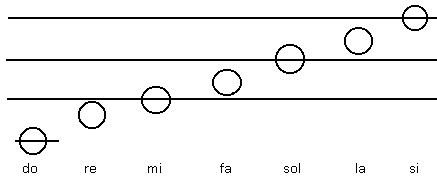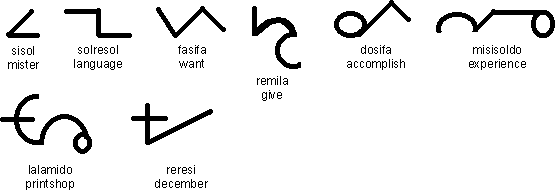Origin
Solresol was invented by François Sudre (1787-1864). He started working on it in 1817 and work on it continued until 1866. Sudre hoped Solresol would be used to facilitate international communication and deliberately made the language very simple, so it would be easy to learn, and unlike any natural language to avoid giving an advantage to any particular group of people.Solresol was the first artificial language to be taken seriously as an interlanguage. It is also the first and only musically-based interlanguage; or at least the only one to make any headway.
Solresol has seven syllables based on the Western musical scale: do re mi fa so la si, though you don't have to be familiar with music in order to learn it. The total number of Solresol words is 2,660: 7 words with one syllable; 49 with two syllables; 336 with three syllables and 2.268 with four syllables;
Written forms of Solresol
- Latin alphabet: do, re, mi, fa, sol, la, si
- Latin alphabet without the vowels (except the o of sol to distinguish it from si): d, r, m, f, so, l, s
- As notes on a musical scale of just three lines:

- As numerals: 1 (do), 2 (re), 3 (mi), 4 (fa), 5 (sol), 6 (la), 7 (si)
- Using the special Solresol stenographic script invented by Vincent Gajewski:

Sample words in the Solresol stenographic script

Double syllables are indicated with a line through them.
Ways to communicate in Solresol
- Speech
- Various forms of writing (see above)
- Sign language
- By singing or playing notes on a musical instrument
- Using lights the colours of the rainbow: one colour for each syllable
Links
Information about Solresolhttp://en.wikipedia.org/wiki/Solresol
http://www.uniovi.es/solresol/
http://www.langmaker.com/outpost/solresol.htm









.jpg)
.jpg)


.jpg)





0 comments:
Post a Comment
Note: Only a member of this blog may post a comment.